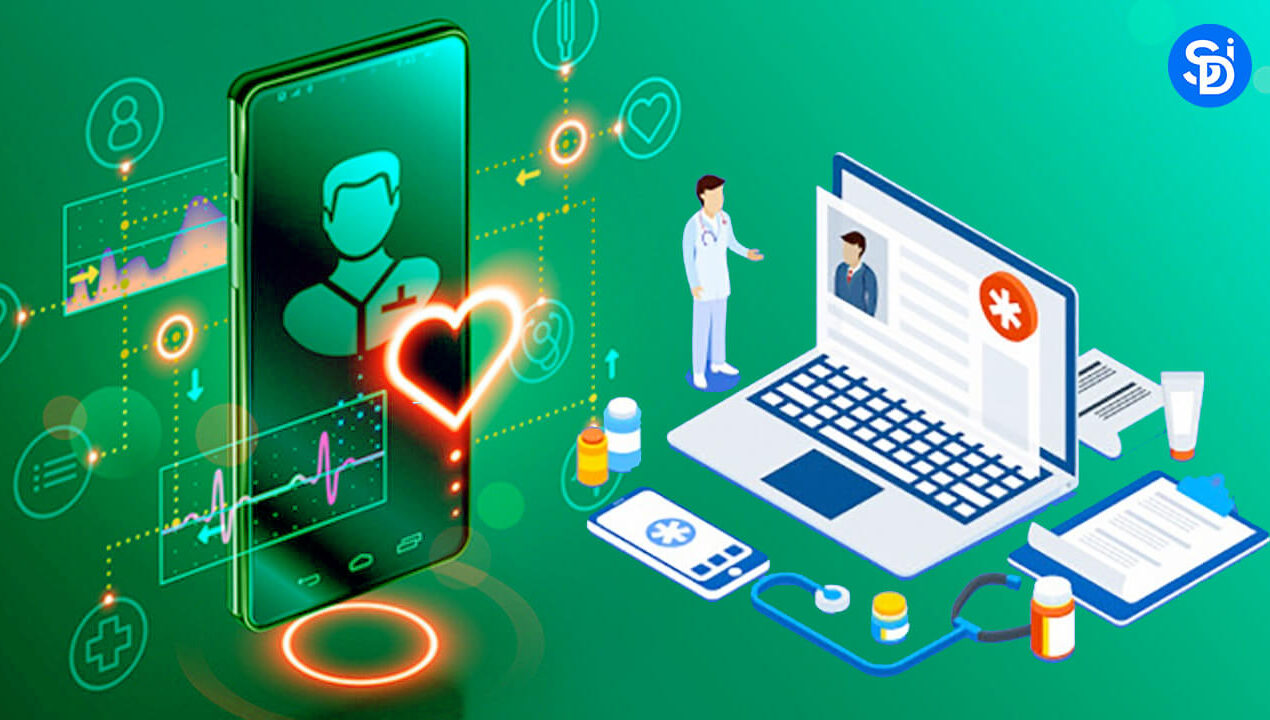The Internet of Things (IoT) is having a significant impact on the healthcare business. Because of the enormous population in Asia-Pacific, the healthcare market’s Internet of Things (IoT) is estimated to be worth USD446.52 billion by 2028. (APAC).
Healthcare and the Internet of Things
Healthcare personnel may monitor patients remotely and provide unique treatment thanks to IoT-enabled gadgets. As the number of patients admitted rises, healthcare providers seek new ways to use IoT-based solutions, such as AI-enabled intelligent medical equipment. These advanced technologies cut down on patient screening and testing downtime.
For doctors and medical professionals, IoT-based healthcare solutions collect data and information. The device delivers the data to the server after collecting it. After gathering data, the device uploads it to the cloud, where doctors may analyse it and take the appropriate actions. The potential application of IoT in healthcare has demonstrated significant gains in inpatient health, medical professional efficiency, and hospital workflows.
Furthermore, the interconnection and communication between IoT sensors and devices have the potential to save many lives. Fitness bands, for example, can monitor patients’ blood pressure, sleep habits, and heart rates, making it easier for them to seek medical help when necessary. Patient monitoring has grown more accessible and more reliable due to these IoT devices.
IoT’s Importance in Healthcare
IoT devices assist clinicians and healthcare practitioners in evaluating and determining the best treatment options for their patients.
Healthcare Benefits of IoT
The adoption of IoT technologies in healthcare provides numerous advantages and potential. Here are a few examples:
Accessibility: The Internet of Things makes telemedicine more effective and accessible. Patients’ data from wearable devices can be shared with doctors, allowing doctors to detect vital signs in real-time.
Remote patient monitoring and conditioning: IoT devices can monitor and gather real-time medical data from afar. These data can be analysed by healthcare specialists so that patients can receive medical advice without having to attend the clinic every day.
End-to-end connection: AI machine-to-machine communication, information sharing, and data mobility can improve healthcare service delivery.
Affordability: IoT eliminates the need for face-to-face visits, better allocation and lower healthcare expenditures.
Since IoT is being used to improve resource allocation and planning, it is a win-win situation.
Patient data processing is accelerated because IoT devices may capture several data points in real-time, making it easier for doctors to retrieve data. IoT can evaluate these data automatically for diagnostics and provide quick access to final findings. IoT will aid in decision-making and provide the appropriate course of action much more quickly than raw data.
Reduced risk of error and miscalculation: Some outcomes may be prone to inaccuracy due to the human component. On the other hand, IoT devices are a reliable way to evaluate data.
Timely notification and tracking: In the healthcare industry, timely treatment is vital, especially for patients with acute diseases.
Thankfully, medical IoT devices can collect data that necessitates a timely alert response. The potential of IoT devices to provide real-time alerting, tracking, and monitoring in the healthcare business supports better treatment.
Medical research is facilitated because the researcher can use data from IoT devices for the study that would otherwise take years to collect. Data can be utilized for statistical analysis in medical research to develop more effective medicinal therapies. Outsourcing medical billing company can provide you patient portals, AI-enable tools and systems.
Applications and Solutions for IoT in Healthcare
In healthcare, the IoT (IoT) is a network of medical devices and software applications that will communicate with various healthcare systems.
Healthcare IoT Devices
While remote patient monitoring—IoT devices that collect patient data such as heart rate and body temperature—is the most well-known example of IoT in healthcare, there are others.
There are other IoT instances in the healthcare business, including:
- Patient monitoring from afar
- Monitoring glucose levels
- Monitoring your heartbeat
- Hand hygiene inspection
- Mood tracking
- Parkinson’s disease surveillance
- Surgical robots
- Mobility solution for healthcare
Other devices and wearables:
- Hearables
- Consumable sensors
- Moodles
- Computer vision software
- Charting for healthcare
- Pills with intelligence
- Healthcare IoT Security
Data security and privacy are two of the most significant concerns IoT presents in healthcare. Data Security is particularly concerning with IoT devices lacking data protocols and security regulations.
What are the most pressing IoT security concerns?
Cybercriminals can get into IoT devices and compromise patients’ and doctors’ Personal Health Information (PHI). Here are a few of the most significant. The IoT Identity Platform is a solution for managing the identity of IoT devices.
IoT CA Direct: Protects device identities with GlobalSign’s certified IoT digital certificates.
IoT Edge Enroll: A comprehensive registration authority service ensures safe and efficient device enrolment.
Identity: Certificate issuance, renewals, cancellations, and revocations are all handled by IoT Device Identity Lifecycle Management.
IoT Custom Trust Models — Through configurable hierarchy configurations and PKI knowledge, the healthcare industry may design trust models tailored to their specific needs.
IoT Device Certificates: PKI-based IoT security helps healthcare IoT devices have a unique and robust device identification.
BellMedex is a medical billing company provides the best IoT, software , tools and systems to help business achieve their destination success.
